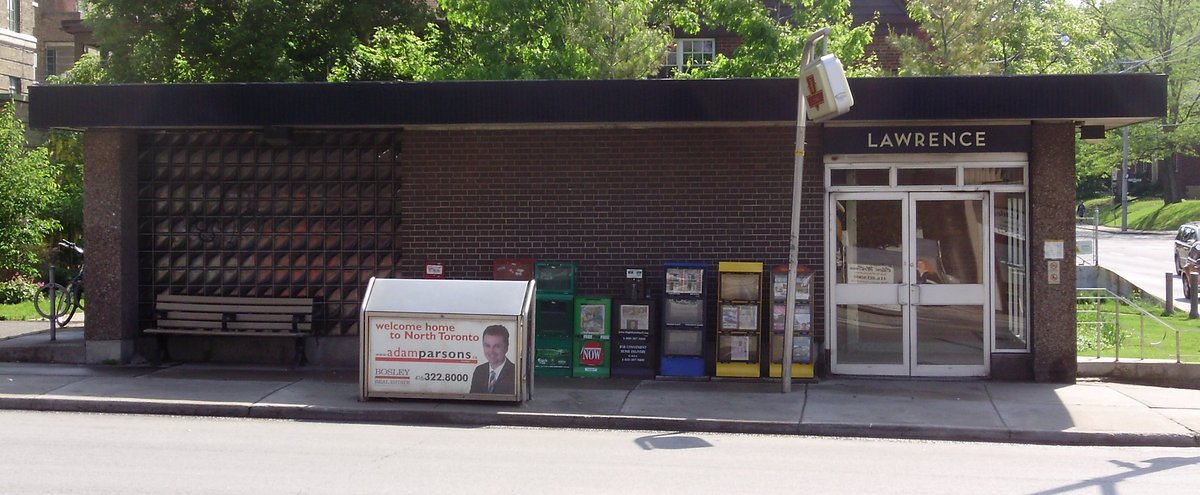
St. Lawrence Toronto Visiting Hours, Tickets, and Historical Sites Guide
Date: 15/06/2025
Introduction: History and Cultural Significance
Toronto’s St. Lawrence and Lawrence neighborhoods are two of the city’s most historically significant and culturally dynamic districts. Their stories begin with deep Indigenous roots—home to the Huron-Wendat, Haudenosaunee, and Anishinaabe nations—long before European settlement. The Lawrence area, in particular, evolved from rural farmland and early garden suburbs into a multicultural residential hub, reflecting Toronto’s expanding diversity and urban growth. Meanwhile, St. Lawrence Market, established in 1803, has become a culinary landmark and a vibrant center of community life.
Visitors can experience the neighborhoods’ past through architectural treasures like the Gooderham Flatiron Building, scenic green spaces such as Alexander Muir Memorial Gardens, and the lively atmosphere of St. Lawrence Market, with over 120 vendors representing global cuisines. The area’s accessibility via public transit—including Lawrence Subway Station and the nearby Union Station—makes it convenient for both locals and tourists. Throughout the year, these neighborhoods host cultural festivals, guided tours, and community events, celebrating Toronto’s rich multicultural heritage.
This guide provides everything you need to plan a visit—covering historical context, key landmarks, visiting hours, ticketing, accessibility, nearby attractions, and travel tips. Whether you’re passionate about history, food, or simply seeking an engaging urban adventure, use this guide to enrich your experience in Lawrence and St. Lawrence.
For further exploration, consult reputable sources such as History of Toronto, the St. Lawrence Market Official Site, and Toronto for You.
Table of Contents
- Introduction: History and Cultural Significance
- Indigenous Foundations and Early European Settlement
- Naming and Growth of Lawrence
- Urbanization and Postwar Development
- Demographic Diversity and Cultural Identity
- Key Landmarks and Heritage Sites
- Visitor Information
- Frequently Asked Questions (FAQ)
- Heritage Conservation and Community Initiatives
- Visitor Experience and Exploration
- St. Lawrence Market: Hours, Tickets, and Exploring the Historic District
- Cultural and Social Highlights
- St. Lawrence Neighborhood Guide: Attractions, Travel Tips, and Accessibility
Indigenous Foundations and Early Settlement
Before European arrival, the Lawrence and St. Lawrence areas were vital Indigenous territories, serving as a crossroads and portage route between Lake Ontario and the Great Lakes (History of Toronto). The area’s transformation began in the late 18th century with the establishment of the Town of York (now Toronto) and the construction of Yonge Street, laying the groundwork for future growth.
The Naming and Growth of Lawrence
Lawrence Avenue, the district’s main thoroughfare, is believed to honor Jacob Lawrence, an early 19th-century settler. Over time, the area grew from isolated hamlets into the planned garden suburb of Lawrence Park, developed in the early 1900s to showcase the ideals of the Garden City movement. The extension of railways and streetcars accelerated residential development, making Lawrence Park one of Toronto’s most sought-after neighborhoods.
Urbanization and Postwar Transformation
The post-WWII era brought a population surge and rapid suburbanization. The opening of Lawrence Subway Station in 1973 improved access to downtown, helping Lawrence Avenue become a vibrant corridor lined with homes, schools, shopping, and transit options (History of Toronto).
Demographic Diversity and Cultural Identity
Lawrence is a microcosm of Toronto’s multiculturalism. Waves of immigration from Europe, Asia, the Middle East, and the Caribbean have shaped neighborhoods like Lawrence Park, Bedford Park, and Lawrence Manor, each offering unique experiences. International eateries, community centers, and annual festivals highlight the area’s diversity (History of Toronto).
Key Landmarks and Heritage Sites
Lawrence Park
Built in the early 20th century, Lawrence Park exemplifies the Garden City movement with winding streets, mature trees, and stately architecture. It remains an outstanding example of early suburban planning (History of Toronto).
Alexander Muir Memorial Gardens
Located east of Yonge Street on Lawrence Avenue, these gardens commemorate Alexander Muir, composer of “The Maple Leaf Forever.” The formal landscaping and commemorative plaques create a tranquil, historic space (Toronto Parks).
Lawrence Subway Station
Opened in 1973, this station connects Lawrence to the city’s core and is a vital transit hub for visitors (TTC).
Historic Religious Institutions
The area boasts historic sites such as Lawrence Park Community Church (est. 1940) and Shaarei Shomayim Congregation, reflecting its enduring religious and cultural diversity.
Major Nearby Heritage Sites
- St. Lawrence Market: An iconic market since 1803, housing over 120 vendors (DEBU).
- Distillery District: Renowned for Victorian industrial architecture and the arts (Visit Canada).
- Casa Loma: Toronto’s castle, with ticketed entry and rotating exhibits.
- Royal Ontario Museum: A short trip from Lawrence, featuring world-class collections.
Visitor Information
Visiting Hours
- Alexander Muir Memorial Gardens: Open daily, dawn to dusk; free entry.
- Lawrence Park: Publicly accessible at all times; best explored by day.
- Lawrence Subway Station: Open per TTC schedule (TTC).
- Major Attractions: Check each site’s official website for current hours.
Tickets and Entry Fees
- Outdoor sites in Lawrence are free to visit.
- Ticketed entry applies to attractions like Casa Loma and the Royal Ontario Museum; advance purchase recommended.
Accessibility and Travel Tips
- Transit: Lawrence is accessible via subway (Lawrence Station) and bus routes.
- Walking: Lawrence Park and nearby gardens are best explored on foot. Wear comfortable shoes.
- Parking: Limited, especially near major commercial areas—public transit is advised.
Guided Tours and Special Events
- Community organizations offer periodic heritage walking tours.
- Festivals and cultural events take place year-round; consult local calendars for schedules.
Top Photographic Spots
- Winding streets and historic homes of Lawrence Park.
- Seasonal floral displays at Alexander Muir Memorial Gardens.
- Bustling market scenes and historic architecture at St. Lawrence Market.
Frequently Asked Questions (FAQ)
Q: What are the main visiting hours for historical sites in Lawrence?
A: Outdoor sites like Alexander Muir Memorial Gardens are open daily from dawn to dusk; check official sites for hours of indoor attractions.
Q: Are tickets required for Lawrence Park?
A: No, the park is public and free to enter.
Q: How do I reach Lawrence by transit?
A: Take the subway to Lawrence Station or use TTC bus routes.
Q: Are guided tours available?
A: Yes, but check local organizations for schedules and booking.
Q: What major Toronto sites are near Lawrence?
A: St. Lawrence Market, Distillery District, Casa Loma, and the Royal Ontario Museum are all easily accessible.
Heritage Conservation and Community Initiatives
Lawrence’s historic buildings and landscapes are protected through city-led and grassroots heritage conservation efforts, ensuring their legacy for future generations (Sustainable Heritage Case Studies).
Visitor Experience and Exploration
Strolling through Lawrence offers a harmonious blend of peaceful gardens, historic architecture, and multicultural vibrancy. With excellent transit connections, the area also serves as an ideal base for exploring Toronto’s broader attractions (History of Toronto).
St. Lawrence Market: Hours, Tickets, and Exploring the Historic District
Overview
St. Lawrence Market is a hub of history and culinary culture in downtown Toronto. Established in 1803, it remains a vibrant marketplace and social gathering space.
Visiting Hours & Tickets
- Monday–Friday: 8:00 AM – 6:00 PM
- Saturday: 5:00 AM – 5:00 PM
- Sunday: Closed, except for special events
Entry is free, but some tours and events require tickets, available at the official website.
Getting There & Accessibility
- Transit: Short walk from Union Station; multiple TTC streetcar and bus routes.
- Parking: Several nearby garages; street parking is limited.
- Accessibility: Wheelchair accessible with elevators and ramps; service animals welcome.
Top Attractions
- Market Building: Over 120 vendors offering gourmet foods, produce, and artisanal goods.
- Gooderham Flatiron Building: A historic, wedge-shaped landmark perfect for photography.
- St. James Cathedral: Canada’s tallest church spire, open for tours.
- King Edward Hotel: Historic hotel designed by E.J. Lennox.
- Distillery District: Cobblestone streets, galleries, and artisan boutiques.
Events and Community Highlights
Annual events include Buskerfest, Woofstock, and the Criterion Bike Race. The Sunday Antique Market, held weekly at 125 The Esplanade, is a haven for vintage enthusiasts (Toronto for You).
Visitor Tips
- Best Time to Visit: Early weekday mornings for fewer crowds.
- Guided Tours: Book through the market’s official site for insights into food and history.
- Photography: Capture the lively stalls and historic architecture.
Discovering the Cultural and Social Significance
The St. Lawrence neighborhood is a living testament to Toronto’s multiculturalism and civic spirit. Historic venues like St. Lawrence Hall and the Market Gallery host exhibitions, lectures, and community gatherings (Away to the City). Seasonal festivals, culinary events, and public art displays foster community engagement and support local artisans, while the market itself is a key driver of economic activity (Timeout Toronto).
The area’s commitment to sustainability is reflected in its focus on local produce, artisanal goods, and vintage items, aligning with Toronto’s environmental goals (Destination Toronto).
St. Lawrence Neighborhood Guide: Key Attractions and Travel Tips
- St. Lawrence Market: South Market (Food Hall): Tuesday–Saturday, 7:00 AM–6:00 PM; North Market: Saturday (Farmers’ Market) and Sunday (Antiques); closed Mondays.
- Gooderham Building: Exterior viewing any time; famed for its architecture and rear mural.
- Heritage Walking Tours: Explore St. James Cathedral, St. Lawrence Hall, and Victorian warehouses.
- Meridian Hall: Toronto’s largest performing arts venue; check Meridian Hall for tickets and events.
- Distillery District: 10-minute walk east; home to galleries, shops, and the Toronto Christmas Market.
- Dining: Enjoy iconic peameal bacon sandwiches, seafood, and global cuisine.
- Arts & Festivals: Jazz Festival, Luminato, and public art throughout the neighborhood.
- Parks & Waterfront: Sugar Beach, Waterfront Trail, and ferries to Toronto Islands.
- Shopping: Antiques Market (Sundays), specialty shops, and boutiques.
- Accessibility: Excellent transit links, pedestrian-friendly, and wheelchair accessible.
Summary & Call to Action
St. Lawrence and Lawrence are quintessential Toronto neighborhoods, blending historical depth, multicultural vibrancy, and urban charm. From heritage walking tours to culinary adventures at the market, every visit offers a new perspective on the city’s past and present. With robust transit access, a wealth of festivals, and ongoing heritage preservation, these neighborhoods are ideal for both first-time visitors and locals.
For guided audio tours, up-to-date event schedules, and travel tips, download the Audiala app. For further planning, consult Destination Toronto, Timeout Toronto, and the St. Lawrence Market Official Site.
Immerse yourself in Toronto’s history and culture—explore St. Lawrence and Lawrence today!
References
- Exploring the immense historical significance of Toronto: uncovering the rich tapestry of the city’s past, History of Toronto
- Visiting St. Lawrence Market: Hours, Tickets, and Exploring Toronto’s Historic District, Official St. Lawrence Market Website
- Cultural and Social Significance: A Visitor’s Guide to St. Lawrence Market and Toronto’s Historic Neighbourhood, Toronto for You
- Toronto Canada: Discover the Vibrant History and Cultural Tapestry of this Dynamic City, History of Toronto
- A Sustainable Place to Grow in Toronto, Sustainable Heritage Case Studies
- Best Things to Do in Toronto, Away to the City
- The History of Toronto’s St. Lawrence Market, DEBU
- Visit Canada: Iconic Landmarks in Old Town Toronto, Visit Canada
- Best Things to Do in Toronto, Timeout Toronto
- Annual Festivals and Events in Toronto, Destination Toronto



























































































































































































